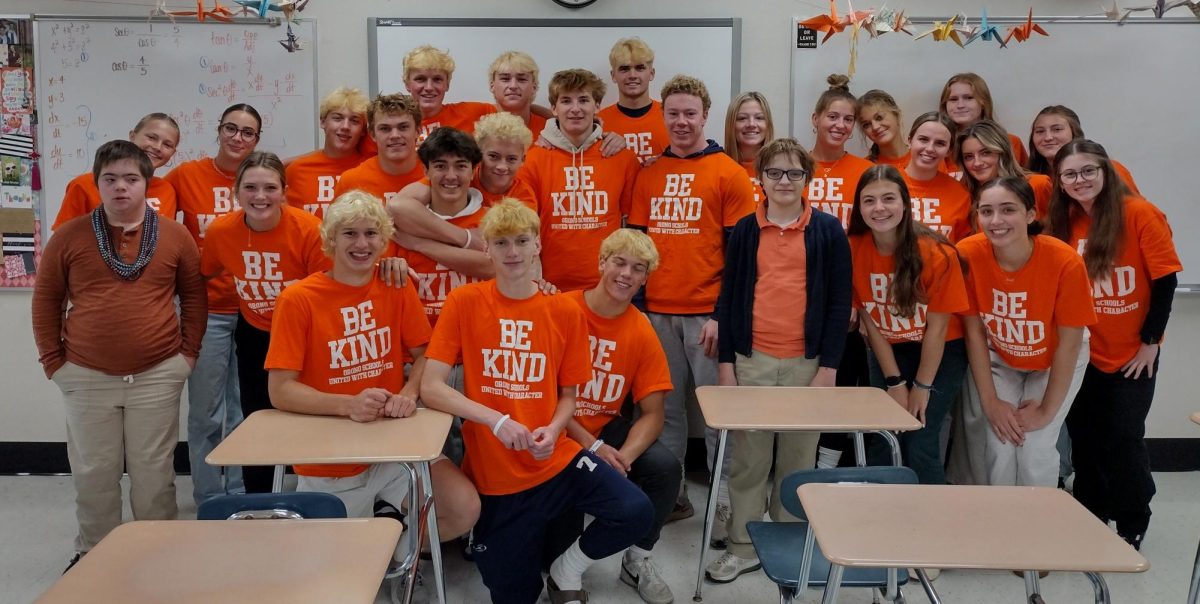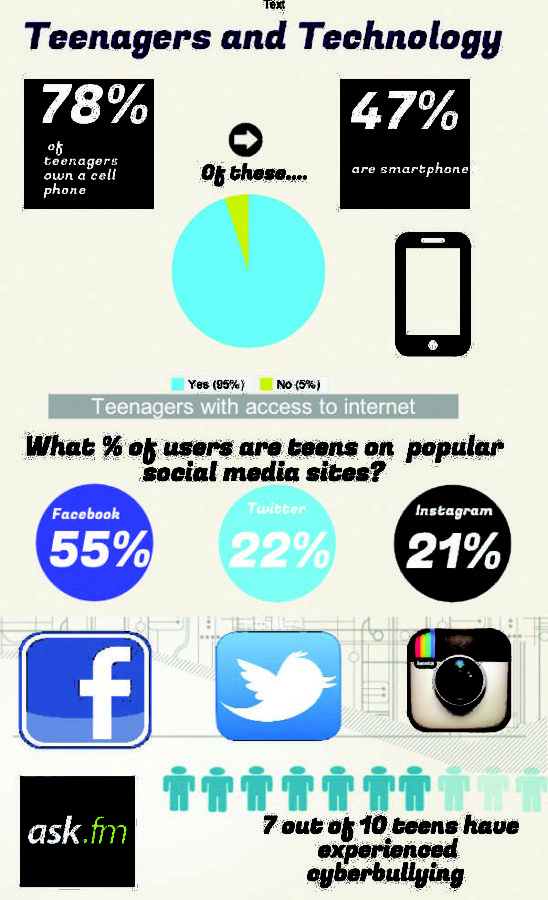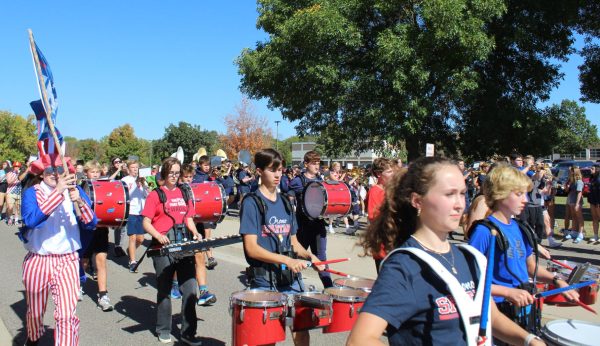Cyber bullying creeps into the middle school
As technology expands, so does the age range of its users. Younger individuals are beginning to develop around the growing presence of technology.
At Orono Middle School, it seems as if each student carries a smartphone. This possession has enhanced learning in the classroom, though it has also developed increased problems over social media.
Referred to as “personal learning devices” by the staff, cell phones and laptops have been incorporated into many teachers’ lessons. According to policy, devices are only allowed when the teacher permits and for the use as stated by the teacher.
Students are now also allowed to have their phones in between classes to check messages from parents and communicate with teachers, which has “cut down on interruptions to classes,” middle school assistant principal Kimberly Harder said.
Due to this increased use, middle school students have begun to use social media sites at a much younger age than in previous years.
These sites include Facebook, Twitter, Instagram and the newly popular anonymous question site Ask.fm.
The two latter sites have recently caused the most controversy within the middle school at Orono.
Although many students use Instagram appropriately, a few have taken it to a new level by creating Instagram accounts for the sole purpose of bullying other students.
“[Students] take pictures from the person they are hating on and put mean comments and captions [underneath the photo]”, OMS eighth grader Grace Smith said*.
A photo of a sixth grader with the caption “Pray for this girl, she has such horrible hair” was a comment on one account.
Many high school students may remember the site Formspring, where people could ask anonymous questions on their peers’ accounts.
However, as this site died out, a newer version has taken its place–Ask.fm. Questions on the site can range from harmless inquiries such as “What is your favorite color?” to inappropriate comments, such as “Have you lost your virginity?” or “Who have you slept with?”
Sydney Anderson* received many hateful comments on her profile, such as “Go back to [where you came from]”, “No one likes you,” and “Why do you not get good grades?” before she finally shut down her account.
Due to the easy access of these sites, bullying has taken a new form and is “pretty much everywhere,” Smith said.*
Although putting a complete end to bullying over social media is impossible, Orono has taken steps to prevent these problems and educate its students on their digital footprint.
Harassment forms are available in the office to any middle school student. Students are encouraged to fill these forms out if they are experiencing bullying online or in the classroom.
“The bully form is really helpful, but not many people use it,” Anderson said.* Because of this, the middle school is working on making this information more widely known.
In addition, the middle school has been working closely with Orono Schools technology specialists Penny Pease and Caitlin Cahill to better educate the students about internet safety and cyber bullying.
Technology will only continue to expand, so attempting to eliminate it from younger ages in not practical. “The reality is, it’s the way of the world,” Harder said.
This is not only a problem at Orono, but one at a national level.
Many schools across the country have been reforming their technology policies due to the growth of its use.
Wayzata, Minnetonka, and Mound all have similar philosophies when it comes to technology policies. This is true for schools outside of the state, as well.
While most schools are embracing the growth of technology, some schools find it unnecessary in the classroom.
For example, Waldorf education does not believe in the use of technology in the classroom. Teachers at the Waldorf school system believe that computers and technology are not needed until high school.
According to the Waldorf Association of Schools in America, “It is more important for students to have the opportunity to interact with one another and with teachers in exploring the world of ideas, participating in the creative process, and developing their knowledge, skills, abilities, and inner qualities.”
Although schools may differ in their approach to handling social media issues, the reasoning behind middle school students’ actions are relatively similar across the board.
Middle school is the bridge between childhood and teenhood, and many struggle with this transition, which can lead to the aforementioned problems.
According to Culpeper Schools, middle school students “tend to be self-conscious, lacking in self esteem, and highly sensitive to personal criticism.”
OMS eighth grade geography teacher Kelly Leibfried said he believes that there are major differences in behavior between girls and boys in the classroom. “Girls are much more subtle; boys are much more outgoing with their acting out,” Leibfried said.
Gender differences observed by teachers in the classroom correspond to differences between genders on social media.
According to the Education Week newsletter, “Adolescent girls are significantly more likely than boys to have experienced cyber bullying,” with a conducted survey showing 25.1 percent of girls and 16.6 percent of boys having experienced it.
The way in which individuals choose to bully over social media also differs among gender.
“Girls are more likely to spread rumors, while boys are more likely to post hurtful pictures or videos,” according to Education Week.
High school students have a responsibility to inform younger students about the repercussions of bullying and online presences.
That being said, mention the importance of safe social media interactions and appropriate online behavior to younger siblings.
*Pseudonyms have been used to protect Orono student identities.























































